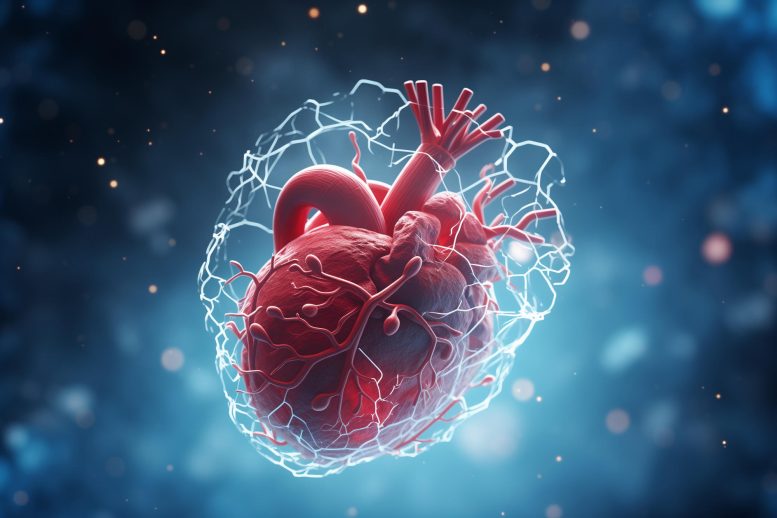
Preclinical research indicates that nanowired cardiac organoids could one day repair hearts instead of just preventing further damage.
Heart disease is a leading cause of death in the U.S., claiming a life every 36 seconds. Heart attacks, a common manifestation of heart disease, occur when the blood supply to the heart is obstructed, leading to a deprivation of oxygen and nutrients and resulting in irreversible tissue damage. Although stents and medications are effective in reopening the blocked vessels, they do not repair the damage to heart tissue, which leaves patients at risk of further complications.
Advancements in Heart Tissue Repair
A team of bioengineers and clinician-scientists at the Medical University of South Carolina (MUSC) and Clemson University (CU) are on the cusp of a revolutionary approach that could change the landscape of cardiac care by repairing damaged heart tissue. They reported their promising preclinical findings in the August issue of Science Advances. The team is led by Ying Mei, Ph.D., who has a joint appointment at CU and MUSC and is part of the CU-MUSC program in Bioengineering. Ryan Barrs, a doctoral candidate in the joint program, is one of the lead authors of the article.
“The damage left behind by heart attacks is usually thought to be permanent and can require heart transplants, which are in short supply,” said Barrs. “Here, we developed electrically conductive ‘mini-hearts’ that could be injected into injured heart muscle to restore its pumping function.”
Overcoming Challenges in Cardiac Cell Therapy
Many researchers have tried to crack the puzzle of how to help the heart to repair itself. One promising strategy for replenishing dead heart cells and promoting repair was individual stem cells that could be differentiated into ‘repair-promoting’ heart tissue. However, this approach fell short.
To understand why, picture the chaotic environment inside a heart after an attack – a landscape rife with inflamed tissue and a relentless pumping that gives no quarter to new cells. Adding individual stem cells is akin to planting a delicate sapling in the middle of a storm; the chances of it taking root are slim, said Mei.
“The heart would often squeeze the stem cells into the blood vessels, causing potential side effects and inefficiencies,” explained Mei. “Moreover, the single cells face a hostile environment in the heart, especially after a heart attack, reducing their survival and effectiveness.”
Organoid Technology and Nanowires in Cardiac Repair
Mei and his interdisciplinary team produced a new strategy that addresses the weaknesses of past approaches. They have developed a more resilient cellular structure to surround the stem-cell derived heart cells called cardiac organoids. Think of them as tightly knit clusters of structural cells that are more likely to withstand the heart’s challenging environment.
“By making these cells into small heart-like microtissues, we can create a more sustainable and resistant structure, capable of withstanding the sudden change of environment,” said Mei.
To assess the ability of the organoids to heal damaged hearts in a preclinical model, Mei collaborated with experts in cell therapy and heart disease at MUSC, including Hongjun Wang, Ph.D., Kristine DeLeon-Pennell, Ph.D., and Donald Menick, Ph.D.
In this animal study, injecting these cardiac organoids directly into the heart led to a 39% recovery of the function lost due to a simulated heart attack. This finding suggests that the cell device goes beyond mere prevention of further damage and contributes to repair of already damaged tissue.
The interdisciplinary team was still not satisfied and wanted to take things a step further.
“We realized that another layer of engineering was needed to ensure proper integration with the host tissue,” Mei said.
Thus, the idea of electrically conductive silicon nanowires was born. These tiny biocompatible wires, invisible to the naked eye, enhance the organoids, synchronizing them with the native heart’s electrical signals. The electrical signals help the clustered cells to move in unison, making them more effective at integrating and pumping with the existing heart tissue.
The result? An astonishing 69% increase in heart function.
Looking Towards the Future
Nanowired human cardiac organoids could represent a leap forward in cardiac care because they go beyond merely preventing further heart damage to actively repairing the damage already done.
“Our study is the first to show in a preclinical model that this combination of nanotechnology and organoid technology holds promise for repairing tissue damage after a heart attack,” said Mei.
The team is now focused on enhancing and refining this technique. “First, we plan to investigate more closely how the nanowires improve cardiac organoid therapy,” said Barrs. Further research, testing, and validations will also be needed to make this method a clinical reality. If that research continues to show the promise of this novel approach, Mei hopes it will be tested in clinical trials in the next decade.
“Our ultimate goal is to provide a more effective and accessible therapy than a heart transplant to heal injured hearts,” said Mei.
Reference: “Nanowired human cardiac organoid transplantation enables highly efficient and effective recovery of infarcted hearts” by Yu Tan, Robert C. Coyle, Ryan W. Barrs, Sophia E. Silver, Mei Li, Dylan J. Richards, Yiliang Lin, Yuanwen Jiang, Hongjun Wang, Donald R. Menick, Kristine Deleon-Pennell, Bozhi Tian and Ying Mei, 4 August 2023, Science Advances.
DOI: 10.1126/sciadv.adf2898